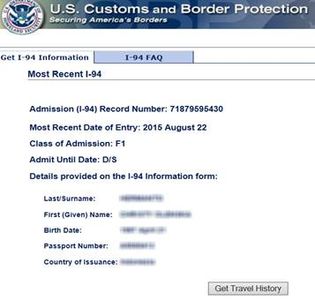Spring 2020 Travel Advisory
Are you considering international travel during the Spring semester?
- The growing outbreak of COVID19 around the world continues to complicate and increase risk for all international travel.
- Please pay special attention to the BU information page on COVID19, details regarding the temporary travel ban for all nonimmigrants travelling to the US from China, Iran and 28 countries in Europe as well as updated guidance from the Centers for Disease Control (CDC).
- Please pay special attention to the new university Policy on Individuals Returning or Arriving From Abroad as a 14 day self-quarantine will be required for those returning from or arriving from a CDC level 2 or level 3 country. All countries worldwide are now classified as a level 2 so anyone returning or arriving from outside the U.S. must self-quarantine prior to reporting to campus. See the policy for instructions and details.
- Many countries are elevating travel restrictions without advanced warning due to sustained transmission.
- While ISSO staff will be happy to advise you on immigration documentation required for travel, we cannot offer any assurances so you should carefully weigh the risks associated with travel as you make personal travel plans for Spring Break and beyond.
Key Tips for International Travel:
- Is your visa valid for your return?
- Do you have a valid travel signature from the ISSO on your Form I-20 (F-1 students) or Form DS-2019 (J-1 students and scholars)?
- Do you have a copy of your I-901 SEVIS Fee Receipt?
- Is your passport valid for at least 6 months beyond your intended US entry date?
Read each section below to make sure you have all the documents you need to return to the U.S.
If you have further questions about international travel or visa renewal please contact your ISSO Advisor with or refer to the ISSO Travel Tips for more information.
In addition, students should pay careful attention to Boston University’s Health and Safety Advisories for travel to high-risk countries.
Do you need to renew your visa on this trip?
The F-1 or J-1 visa stamp in your passport must be valid on the day you will reenter the U.S. in order for you to be eligible to return in a student immigration status. If your visa will expire before the date of your return, you must apply for a new visa at a U.S. consulate or embassy while you are out of the U.S. If this will be your first time applying for a visa renewal, plan to request a new travel signature before you leave the U.S. and to speak with an ISSO advisor to make sure you are prepared for your visa appointment.
Please note: Executive Order 13769 bans new visas for nationals of certain countries and has eliminated waivers of visa interviews for all countries. Nationals from countries listed on the travel ban should contact the ISSO for guidance. All other nationals may need to schedule an in-person visa interview at a U.S. consulate to apply for a new visa during your travel,. If you need to apply for a new visa, you may face substantial administrative processing delays at the U.S. Embassy, which could delay your return to the United States to resume classes. If you are unsure of whether or not to travel, you should consult with your academic department about the consequences to your academic progress if you are unable to return to the U.S. right away. The ISSO Advisor-on-Call will provide basic information about the visa application process when you request a travel signature. If you have questions about your specific travel plans, you can consult also with your ISSO advisor.
If your visa has expired and you are planning a short trip to Canada, Mexico or the adjacent islands, read up on automatic visa revalidation to see if this special provision might apply to you.
If you will be applying for a new nonimmigrant visa while abroad, please be aware that U.S Department of State has expanded the data they will collect on the DS-160 Application for a Nonimmigrant Visa. A consular official may require you to complete additional forms at the point of visa renewal similar to the DS-158 Contact Information and Work History for a Nonimmigrant Visa Applicant, the DS-157 Supplemental Application and/or the Form DS-5535, Supplemental Questions for Visa Applicants. These supplemental forms are not be required for all visa applicants, but may be requested at the discretion of a consular officer. If you are asked to complete additional forms, you will need to disclose your travel, address, and employment history, family information, and social media details.
What is a travel signature?
- A travel signature is a signature from an ISSO advisor (sometimes referred to as Designated School Official) on your I-20 or DS-2019.
- This signature is generally valid for one year, and can be used for multiple trips abroad. (The signature is valid for six months only for F-1 students on approved F-1 Optional Practical Training.)
- You need to have a valid travel signature on the date you reenter the U.S. after international travel.
- A more recent travel signature is recommended if you plan to renew your visa on this trip abroad.
- If you have a valid travel signature already, there is no need to come to the ISSO to request one!
Do you need a travel signature?
Check to see if there is a travel signature on page 2 of your I-20 (for F-1 students), or on the right-hand side of your DS-2019 (for J-1 students). If your travel signature is up-to-date (within one year for continuing F-1 and J-1 students, or within six months for F-1 students on OPT).
If you already have a valid travel signature, then you do not need a new one! A travel signature is considered valid if it is dated no more than one year before the date you expect to return to the U.S. A more recent travel signature is recommended if you will renew your visa on this trip abroad or if you are on Optional Practical Training (OPT).
A valid I-20 travel signature appears on page 2:

A sample DS-2019 signature appears on the right-hand side of the form:

How can I request a travel signature?
Bring your I-20 or DS-2019, along with your passport showing your most recent U.S. entry and your most recent visa, to the front desk of the ISSO to request a travel signature during ISSO student walk-in hours. Please plan ahead as travel signatures may take one business day for ISSO processing. Travel signatures can often be completed upon request if you choose to wait at the ISSO. Please come prepared to wait for this expedited service. Wait times for a same-day travel signature will vary. During our busiest times, we may not be able to accommodate same day travel signatures and next-day pick up of your document may be required.
What is my SEVIS Fee Receipt?
All F-1 students and J-1 exchange visitors with “initial” immigration documents are required to pay this SEVIS Fee when you first begin your program of study. When entering the U.S. you may be asked to provide proof that this fee was paid. If you have been continuously enrolled with the same SEVIS record, you do not need to pay the fee again, provided you have proof of payment. If you took a leave of absence, had a break in status or traveled to regain status with a new SEVIS number, you will need to pay a new SEVIS Fee for a new SEVIS record. Proof of SEVIS Fee payment can be printed from the I-901 SEVIS Fee website.
What should I do after I return to the U.S.?
When you arrive in the U.S. by air or sea, U.S. Customs and Border Protection (CBP) may stamp your passport and will electronically update your I-94 entry record to reflect the immigration status in which you were admitted and the length of lawful stay that you have been granted.
For F-1 students, J-1 exchange visitors, and your F-2 and J-2 dependents, your passport stamp and electronic record should reflect your correct status for “D/S” (duration of status).
Each time you reenter the U.S. it is important to check both your passport stamp (if one is given) and your electronic I-94 record to make certain these are correct. We recommend that you retrieve your electronic I-94 record after each entry to the United States and save a copy of your records. Errors to your admission status or length of stay can jeopardize your ability to study, work and remain lawfully in the U.S. If you discover an error to your passport stamp or your electronic I-94 record, come to the ISSO immediately do discuss how this can be corrected.
Sample U.S. Passport Entry Stamp
“F-1 D/S” = F-1 status for “Duration of Status”
Both your passport entry stamp and your I-94 record (below) should read F-1 or J-1 status (as appropriate) and “D/S” (for “duration of status) if you are a student pursuing a full course of study.

While not all Ports of Entry provide passports stamps, a clear passport stamp may be sufficient to show your admission in a specific immigration status. However, if you need to apply for employment authorization or other benefits from federal government agencies, you will need to present a print out of your electronic I-94 record.







